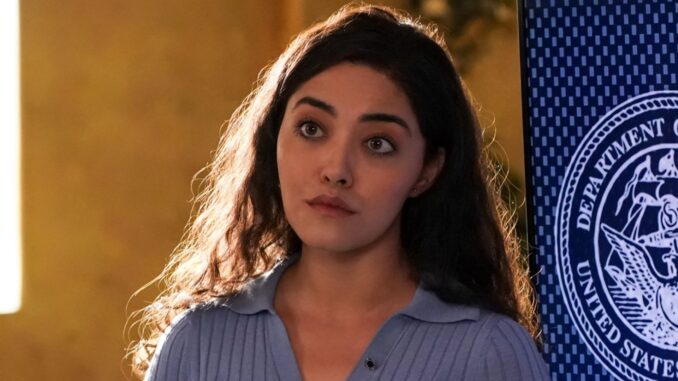
Welcome to Paradise—TV Style
Let’s be real—when you hear “Hawai’i,” your mind drifts to swaying palms, sun-drenched beaches, and that cool ocean breeze. But when NCIS: Hawai’i came on the scene, it wasn’t just the storylines or cast that hooked fans. It was the breathtaking setting that turned casual viewers into loyal fans. And if you’re wondering whether the setting plays a major role in the show’s success… spoiler alert: it absolutely does.
Why Setting Matters in TV Shows
It’s More Than Just a Backdrop
In storytelling, setting is everything. It builds mood, influences the narrative, and even becomes a character itself. That’s exactly what Hawai’i does for NCIS—it doesn’t just frame the action, it enhances it.
Immersive Worldbuilding Through Landscape
Hawai’i provides a rich visual palette—lush rainforests, volcanic ridges, deep blue coastlines—that creates an immersive experience. Every scene feels cinematic, and viewers are transported.
Hawai’i Isn’t Just Pretty—It’s Strategic
A Tactical Edge for the NCIS Team
Think about it. Hawai’i is the crossroads of the Pacific, with military, geopolitical, and cultural importance. It gives the NCIS team plausible, high-stakes cases with international implications, all without feeling forced.
Diversity in Storytelling
Hawai’i’s unique cultural blend—Native Hawaiian traditions, East Asian influences, military communities—adds depth and authenticity to each episode. The stories feel richer, more grounded, and more inclusive.
Filming On Location Adds Realism
No Green Screens Needed
Unlike shows that fake the scenery, NCIS: Hawai’i is filmed on location. That authenticity shines through. From real island sunsets to actual naval bases, what you see is what’s really there.
A Treat for the Eyes
Cinematographers get to play with natural lighting, golden-hour hues, and deep tropical greens. Visually, the show stands head and shoulders above many of its franchise counterparts.
A Unique Vibe That Sets It Apart
Not Your Typical Crime Drama
The Aloha State gives NCIS: Hawai’i a laid-back, yet intense vibe. Yes, there’s danger. Yes, there’s action. But there’s also ohana (family), community, and a sense of heart that’s tied directly to the setting.
Surfboards, Not Just Guns
One episode might end in a high-stakes chase, and the next opens with characters catching waves or attending a luau. That’s the NCIS: Hawai’i flavor, and it’s addictive.
The Characters Blend into the Landscape
Cast Chemistry Enhanced by Island Life
The dynamic between characters feels more authentic in this setting. Maybe it’s the sunshine. Maybe it’s the surf. But the team feels closer—like a family—and the setting helps build that bond.
Vanessa Lachey: Queen of the Island
As Jane Tennant, Vanessa Lachey shines. And honestly, she looks like she was born to wear those shades, stand on that sand, and take down criminals in paradise.
In addition to the roster of glorious characters, there’s also the unbelievable setting that the series has not failed to take advantage of to heighten their stories. Simply being set (and filmed!) in Hawai’i separates the show from everything else, as there are so many unique opportunities for storytelling while keeping viewers captivated by the beautiful background when the agents wander outside of their base. Some of the stories that the series has told thus far also include information or ties to Hawaiian history, legends, and myths.
Every aspect of NCIS: Hawai’i feels purposely planned to allow the show to stand on its own and represent a step forward, in all meanings of the word, for the franchise. The cast is incredibly diverse, while the stories are fresh and exciting. There is nothing quite like this show on television, despite it being the third spinoff of the flagship show, which is exactly what this series needed to survive. All in all, NCIS: Hawai’i is a much-watch show and the perfect new beginning for the NCIS franchise.
In addition, the dynamics between each of the members of the team are well-developed as well, something that usually falls to the wayside in favor of pushing the entire team as a whole to the forefront of the series. From the beginning, each of these individual dynamics has been fleshed out beautifully. For example, Lucy looking to Jane as a mentor for comfort and reassurance has given viewers an interesting glimpse into both characters, especially as we saw a comparable dynamic in the first 13 episodes where Jane looked to her former mentor Maggie Shaw (Julie White) for something similar.
The relationship with Jesse and Lucy, something of a brother-and-sister type dynamic full of love and teasing fun, also stands out, taking the team aspect a step further and ensuring we see that this is a family. Even with Kai and Ernie, though we don’t see them one-on-one nearly as much as we should, Ernie’s playfulness counters Kai’s serious nature so perfectly. Each individual on the team is complemented by everyone else around them, which is so incredibly rare.

Whistler also adds an interesting element as the FBI liaison assisting NCIS with their investigations, even though she may not technically be on the NCIS team. But, one of the more compelling factors that helps the series stand out is Whistler and Lucy’s romance, which never fails to get its time in the spotlight. Already, after only one season, it’s easy to say that this romance is one of the best LGBTQ+ romances on-screen.
It is treated with sincerity and respect, written as one of the major aspects that make NCIS: Hawai’i what it is, while still ultimately helping both characters to grow as both individuals and in their careers. Unfortunately, it’s unusual to see LGBTQ+ relationships handled with such careful hands on network television, so this has also really helped to boost the NCIS franchise and the show on its own forward.
